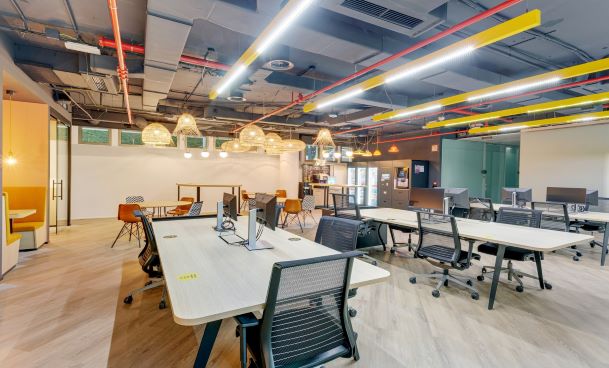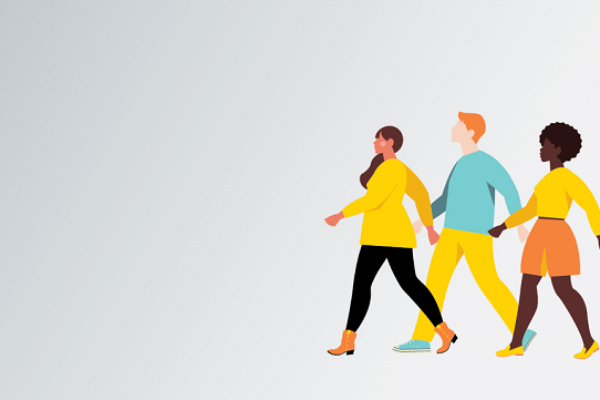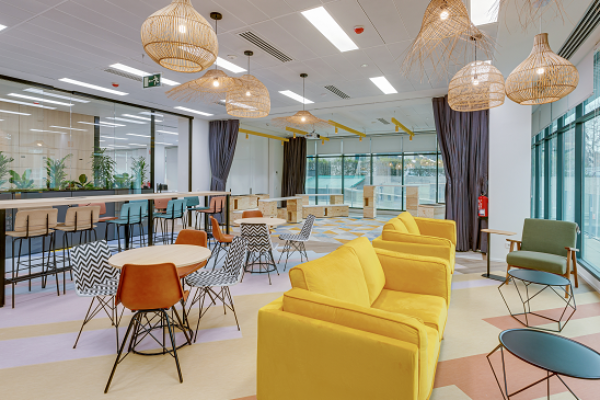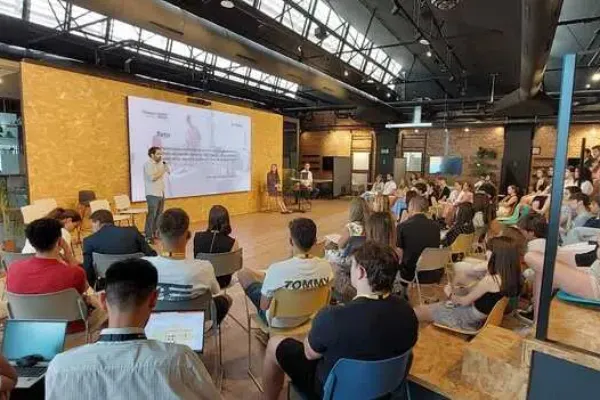How to approach office reopening and create Covid-19-free spaces
New workspace design divided by neighbourhoods marks the return to the new normal.

Table of contents:
At present, most workers go to the office two days a week and the remaining days work from home. According to data from Eurostat, only 5.8% of employed people in the euro area regularly worked from home in 2018. A year after the outbreak of the coronavirus pandemic, this figure has risen by 74%.
According to the report A Sustainable Workplace drawn up by IESE and Savills Aguirre Newmanque based on a large survey in which more than three million employees in different countries participated, only 12% of respondents would like to always work from home. These findings have prompted companies to facilitate a return to the office.
In each of Prosegur’s buildings, for example, visual cues such as signs that serve as reminders for employees to keep their distance have been placed in corridors, potential areas of crowding and workstations. This methodology, which began to be implemented in Spain, has already been transferred to different countries where the company also operates, although in some of them it has not yet been implemented because they have a very high incidence rate. According to company sources “No company is as well prepared to take care of the safety of its employees as a security company.”
In the first quarter of 2021, working from home was maintained in 43.4% of offices (eight points less than the lockdown months). And it has been the formula chosen by 37.6% of workers (nine points less than during the State of Alarm), according to data from the National Statistics Institute (INE).
De-escalation and the beginning of the new normal have brought about a gradual return to offices. Companies are figuring out how to do this in the safest possible way to avoid Covid-19 outbreaks. According to Pablo Grande, Global Head of Design, Workplace & Real Estate Projects within the Properties department "Ensuring that employees feel safe is key to overcome their fear of returning to the office”. A year after businesses were forced to shutter and instruct their employees to work from home, this formula enabled companies that were able to implement remote work to maintain organizational productivity. According to data from the Adecco Group Institute, 2.86 million people are currently working from home in Spain, 1.2 million more than a year ago, when the pandemic hit.
The usual tasks of employees have been re-arranged with this anti-covid methodology. From the time of clocking-in to the use of telephones or meetings in conference rooms. The company has developed a self-management totem that securely regulates arranged visits. These devices allow the identification of staff through a QR code, avoiding queues, facilitating access to the facilities and verifying the identity of visitors.
Once inside the offices, there is a basic duty; to adhere to physical distancing standards. The offices operate under capacity control. In order to control the flow of people in the workplaces, capacity limits, personal protection elements, queue control (number, space between users, time frame) and hot spot detectors have been put in place.
As the months go by experts believe that employees will become increasingly aware of how to act under the new normal and to what extent certain measures can be relaxed. For the time being, however, it is necessary to implement measures to create spaces of trust where prevention is paramount. The design of access controls, contactless identity validation systems, temperature measurement, air filtration and the use of personal protective equipment are all part of the methodology that is being implemented in Prosegur, which has proved to be a success.
Companies are already welcoming back their employees. Prosegur is one of them, and in order to guarantee safety it has established a specific methodology based on the social bubbles that have been implemented in schools and universities. At present, the different departments of the company are functioning as neighbourhoods within the premises to ensure safety. Each neighbourhood has its own toilets, workspaces and even its own photocopiers so that there is no contact with others and so that the spread of the virus can be controlled in the event of an outbreak.
For this reason, the Spanish Office Association (AEO), which brings together companies and property owners, has published a detailed guide with criteria, protocols and best practices. The document highlights safety distance and reduced employee density as two of the most important elements.
The guide recommends that the return to the workplace should be carried out in four phases; Phase One; youngest employees (under 40); Phase Two; middle-aged employees (between 40 and 60); Phase Three; employees over 60 with no pathologies; and Phase Four; particularly vulnerable employees.


.webp)
%20(2).jpg)
.png)
.jpg)